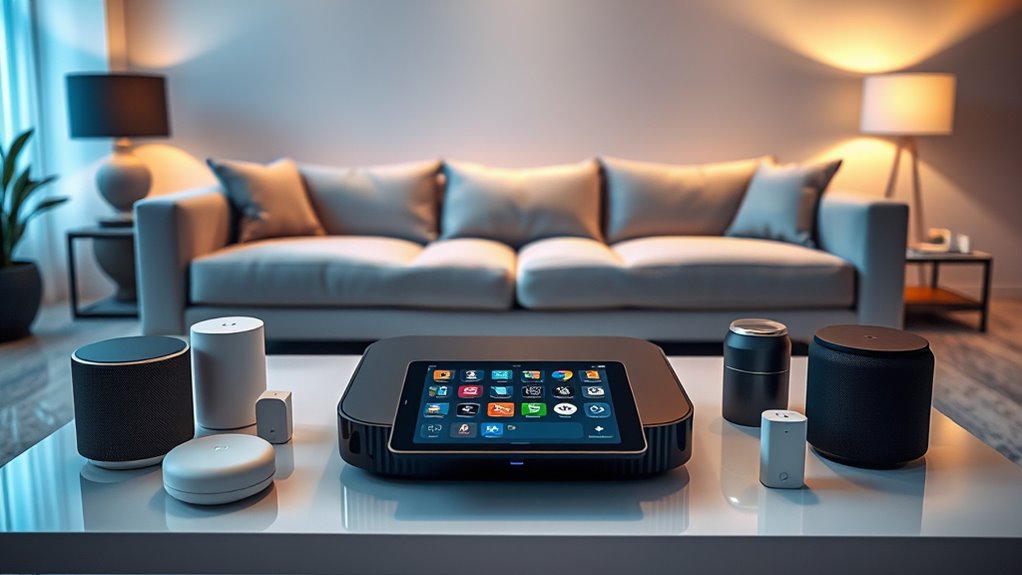If you’re looking for the best smart home hubs of 2025, I’ve got you covered. I’ve found options with broad device compatibility, support for multiple protocols like Zigbee, Z-Wave, Thread, and Matter, and features like voice assistant integration. Many hubs offer sleek designs, easy installation, and robust automation capabilities, while prioritizing privacy and security. Interested in a hub that fits your setup? Keep exploring, and you’ll discover the perfect one for your smart home journey.
Key Takeaways
- Comprehensive overview of the top 15 smart home hubs of 2025, highlighting compatibility, features, and ecosystem support.
- Details on design options, installation methods, and user experience for seamless connected living.
- Insights into privacy, security, and automation capabilities for safe and efficient smart home management.
- Analysis of strengths, limitations, and suitability for different user needs and technical expertise.
- Guidance on choosing hubs with multi-protocol support, local control, and advanced automation features.
Amazon Echo Hub, 8” Smart Home Control Panel with Alexa
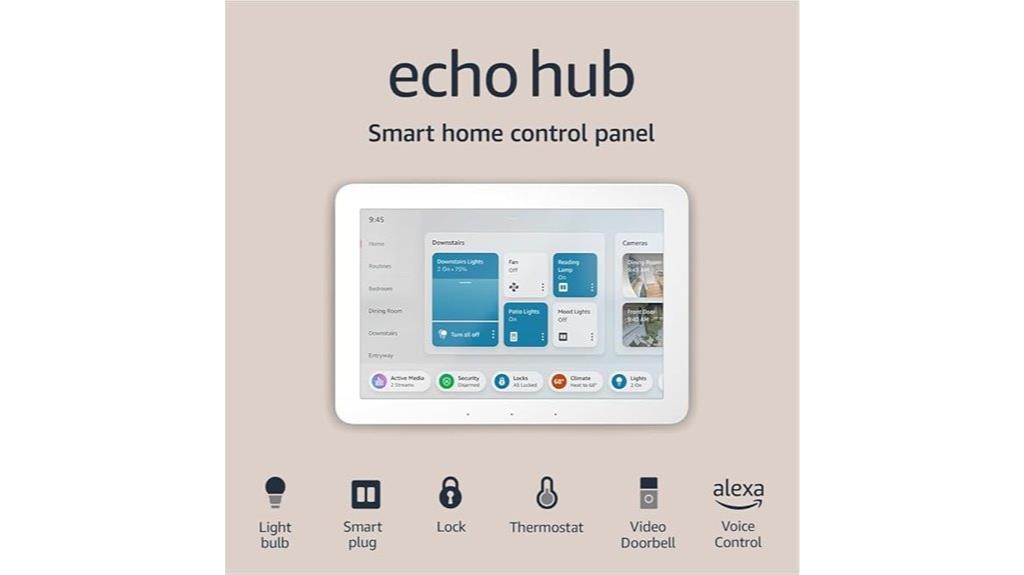
If you’re looking for a versatile control panel that integrates seamlessly with a wide range of smart devices, the Amazon Echo Hub is an excellent choice. Its 8-inch touchscreen offers crisp visuals, and it supports thousands of compatible devices like locks, thermostats, and cameras via Zigbee, Thread, and Matter. The device combines voice control with a user-friendly interface, making managing routines, security, and media effortless. Installation is flexible, with options for wall mounting or tabletop use, and it prioritizes privacy with features like a microphone off button and end-to-end encryption. Overall, the Echo Hub streamlines smart home management in a sleek, accessible package.
Best For: homeowners and tech enthusiasts seeking a centralized, customizable smart home control panel with seamless device integration and privacy features.
Pros:
- Supports a wide range of smart devices via Zigbee, Thread, and Matter for versatile ecosystem management
- User-friendly touchscreen interface with voice control capabilities through Alexa
- Flexible installation options, including wall mounting and tabletop use, with privacy features like microphone off button
Cons:
- Sluggish responsiveness and limited customization of screen brightness and proximity sensor settings
- Stability issues with Thread device connectivity and some power adapter faults reported by users
- Lack of certain features like HFP Bluetooth profile support and limited control over sensor behaviors
Aqara Smart Hub M3 for Home Automation
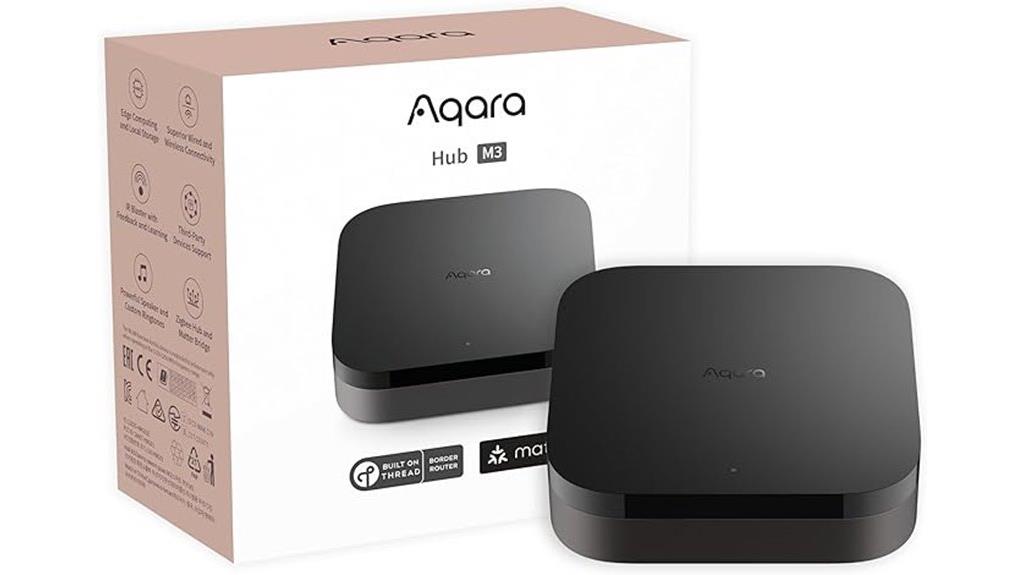
The Aqara Smart Hub M3 stands out as an excellent choice for smart home enthusiasts who prioritize local control and robust automation capabilities. It supports multiple protocols like Zigbee, Thread, Wi-Fi, Bluetooth, IR, PoE, and USB-C, making it highly versatile. Designed as a Matter controller and Thread border router, it seamlessly integrates Aqara devices and third-party products via hubs. With support for up to 127 Zigbee and Thread devices, it offers reliable automations without relying heavily on cloud services. Its privacy-focused design, local storage, and flexible placement options make it a solid central hub for building a secure, responsive smart home ecosystem.
Best For: smart home enthusiasts who value local control, robust automation, and multi-protocol device integration in a privacy-focused hub.
Pros:
- Supports multiple protocols including Zigbee, Thread, Wi-Fi, Bluetooth, IR, PoE, and USB-C for versatile connectivity
- Acts as a Matter controller and Thread border router for seamless device integration and reliable automations
- Local storage and automation capabilities enhance privacy and reduce reliance on cloud services
Cons:
- Limited compatibility with third-party Zigbee devices, requiring additional routers or extenders for expanded coverage
- Higher cost compared to other hubs with similar features
- User reports of bugs, app interface issues, and limited support for certain third-party devices
Amazon Echo Show 8 (Newest Model) with Alexa and Smart Home Hub
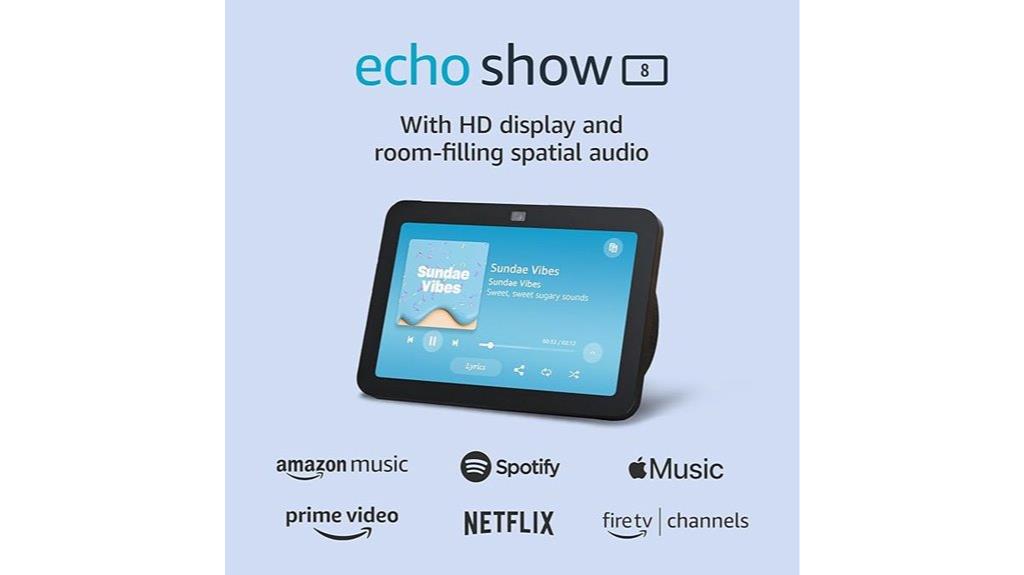
For anyone seeking a compact yet powerful smart home hub, the Amazon Echo Show 8 (Newest Model) stands out with its vibrant 8-inch HD touchscreen and seamless Alexa integration. Its sleek design measures just under 8 inches, housing a 13 MP camera with privacy features like a shutter and microphone mute. It supports Zigbee, Matter, and Thread protocols, acting as a built-in border router to control compatible devices. The device offers room-filling sound with spatial audio and dual drivers, making it perfect for streaming, calls, or controlling your smart home. Easy setup, privacy controls, and versatility make the Echo Show 8 a top choice for connected living.
Best For: smart home enthusiasts seeking a compact, versatile hub with high-quality display and privacy features.
Pros:
- Vibrant 8-inch HD touchscreen with adaptive color technology for optimal viewing.
- Supports Zigbee, Matter, and Thread protocols, acting as a built-in smart home hub.
- Privacy features include a camera shutter, microphone mute, and voice recording controls.
Cons:
- Limited to an 8-inch display, which may be small for some entertainment needs.
- Requires a stable WiFi connection for optimal performance.
- Subscription services needed for some streaming and music features.
Home Assistant Green Smart Home Hub
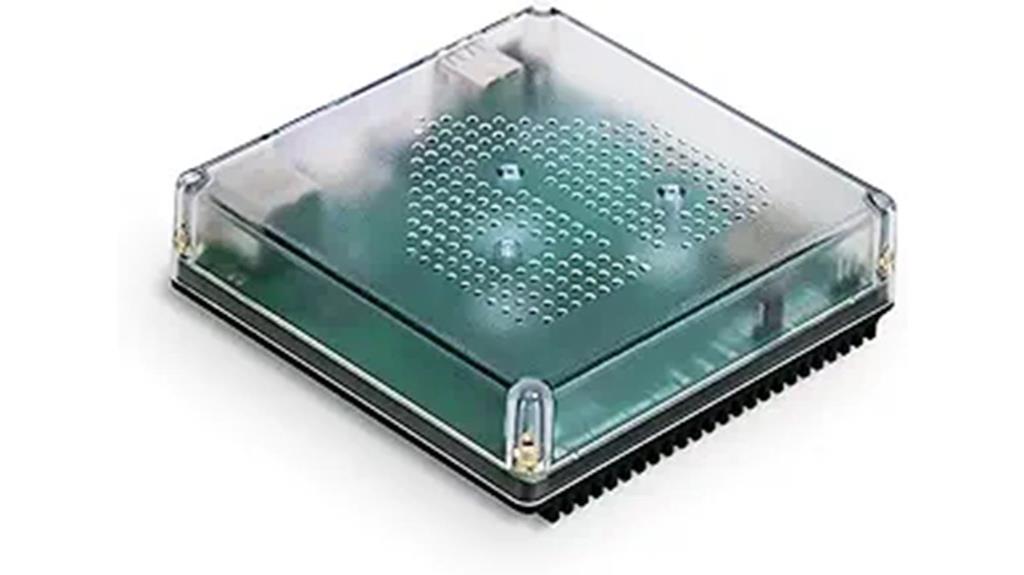
Home Assistant Green stands out as an ideal choice for those seeking a reliable, locally-controlled smart home hub that combines ease of use with robust automation capabilities. Its compact, fanless design is silent and energy-efficient, powered by a quad-core processor, 32GB storage, and 4GB RAM. The device supports Z-Wave, Zigbee, and Thread via USB expandability and comes pre-installed with Home Assistant, enabling seamless control over your entire smart home. With quick setup, extensive automation options, and local control, it offers faster responses and better device compatibility. Overall, it’s a dependable, user-friendly hub perfect for both beginners and experienced users aiming for a streamlined, integrated smart home experience.
Best For: individuals seeking a reliable, easy-to-use, locally-controlled smart home hub suitable for both beginners and advanced users looking to streamline their home automation setup.
Pros:
- Easy to set up with quick, plug-and-play installation
- Supports multiple protocols (Z-Wave, Zigbee, Thread) via USB expandability
- Offers fast, local control for improved device responsiveness and reliability
Cons:
- Some users report a learning curve with the user interface and account management
- Slightly higher price point compared to other smart home hubs
- Occasional difficulties with configuration and setup procedures reported by a few users
eufy Smart Display E10, Home Hub with 8 Control Panel
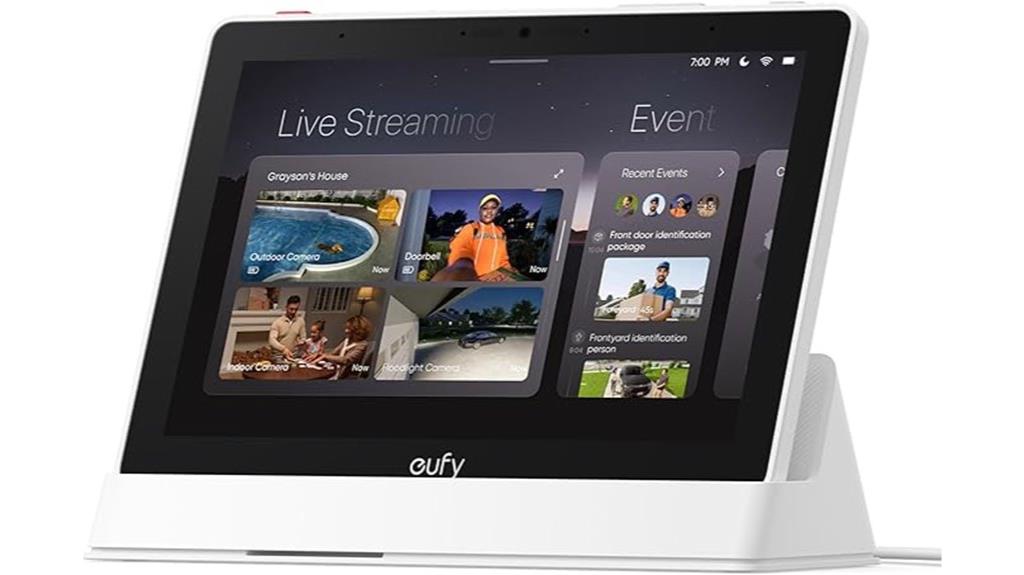
If you’re already invested in the Eufy ecosystem or want a user-friendly smart hub with multiple video feeds, the eufy Smart Display E10 is a solid choice. Its 8-inch screen displays four live video streams simultaneously, making monitoring your home simple. It offers instant door alerts, live video, and voice notifications, plus one-tap control of compatible devices like cameras, locks, and doorbells. Powered by batteries with about a week of use, it’s easy to set up and integrates smoothly with Eufy products. While some users note minor lag and connection issues, overall, it’s a practical, security-focused hub for those seeking convenience and all-encompassing monitoring.
Best For: those already invested in the Eufy ecosystem seeking a user-friendly smart hub with multiple live video feeds and quick device control.
Pros:
- Easy setup and seamless integration with Eufy devices and other smart home systems like Alexa and Apple HomeKit
- Supports four simultaneous live video feeds for comprehensive home monitoring
- Features instant alerts, voice notifications, and one-tap control for compatible devices
Cons:
- Occasional lag, crashes, and connection drops during extended use or with multiple cameras
- Limited hardware performance and some buggy software, especially with older HomeBase models
- Slightly bulky design with average battery life of about a week, which may require frequent charging
Homey Pro Smart Home Hub for Automation
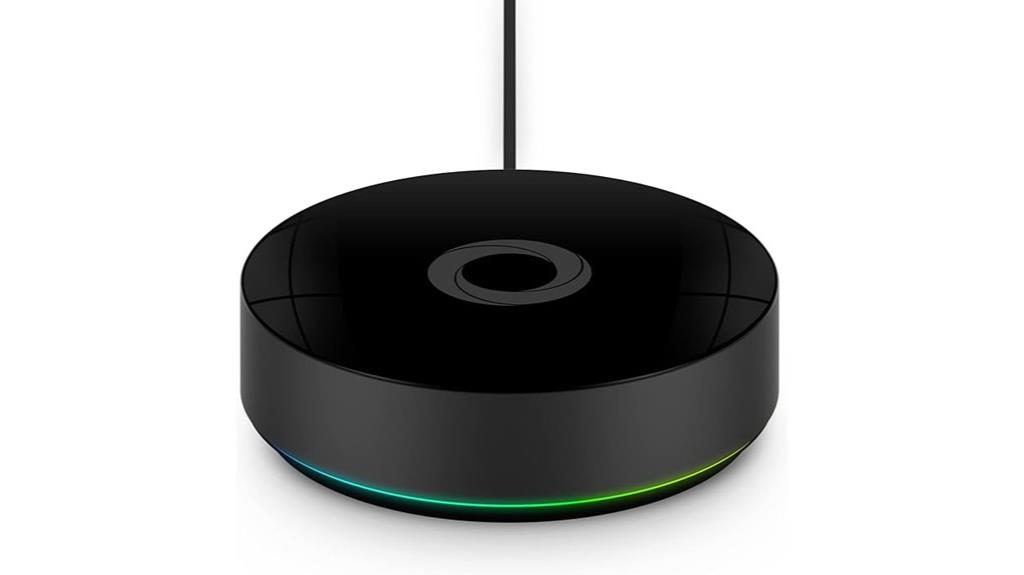
The Homey Pro Smart Home Hub stands out as an excellent choice for those seeking extensive device compatibility and reliable local control. It supports over 50,000 devices from more than 1,000 brands, including popular ones like Sonos, Philips Hue, and Yale, and works with Siri, Alexa, and Google Home. Its multi-protocol technology covers Wi-Fi, Zigbee, Z-Wave, Bluetooth, Matter, and Thread, ensuring seamless integration. You can create custom automations, monitor energy usage, and manage your entire smart home remotely via the app or web interface. The open platform allows for continuous updates and new device additions, making it a versatile, future-proof hub.
Best For: tech enthusiasts and homeowners seeking a highly compatible, reliable, and customizable smart home hub with extensive device support and local control capabilities.
Pros:
- Supports over 50,000 devices from more than 1,000 brands, ensuring broad compatibility.
- Multi-protocol technology (Wi-Fi, Zigbee, Z-Wave, Bluetooth, Matter, Thread) for seamless device integration.
- Local-first control minimizes reliance on cloud services, enhancing privacy and reliability.
Cons:
- Setup and configuration may be complex for beginners unfamiliar with smart home automation.
- The extensive compatibility might lead to higher initial costs or require additional devices for full integration.
- Firmware and app updates are necessary to maintain compatibility with new devices and standards.
Amazon Echo Show 15 (Newest Model) Full HD 15.6 Kitchen Hub
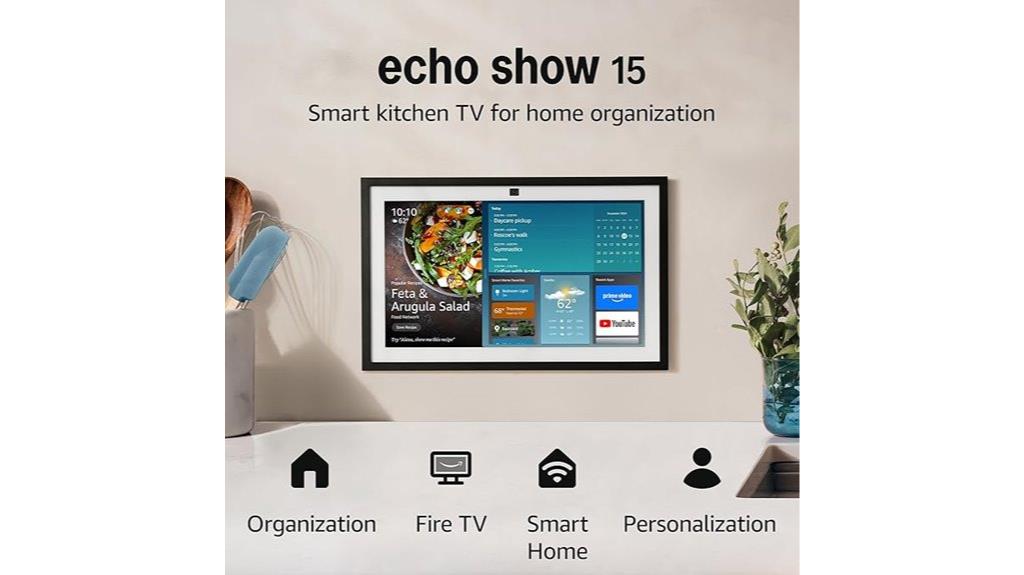
Designed specifically for busy kitchens and modern families, the Amazon Echo Show 15 (Newest Model) stands out with its expansive 15.6-inch Full HD display, making it easy to multitask and stay organized. It supports both landscape and portrait modes, and can be wall-mounted or placed on a stand. Equipped with a 13 MP camera, vibrant sound system, and smart home integration via Zigbee, Matter, and Thread, it’s perfect for controlling devices and viewing feeds. With built-in Fire TV, streaming, video calling, and family widgets, it combines entertainment and organization seamlessly, all while prioritizing privacy with multiple security features.
Best For: busy families and home cooks seeking an all-in-one smart display for entertainment, organization, and smart home control in the kitchen.
Pros:
- Large 15.6-inch Full HD touchscreen ideal for multitasking and viewing recipes or media.
- Supports multiple smart home protocols (Zigbee, Matter, Thread) for seamless device management.
- Built-in Fire TV and high-quality audio provide versatile entertainment options.
Cons:
- The device’s size may be cumbersome for smaller kitchens or spaces.
- Requires a separate stand or wall mount (sold separately) for optimal placement.
- Some features or apps may require additional subscriptions or fees.
Tapo Smart Home Central Hub with Expandable Storage
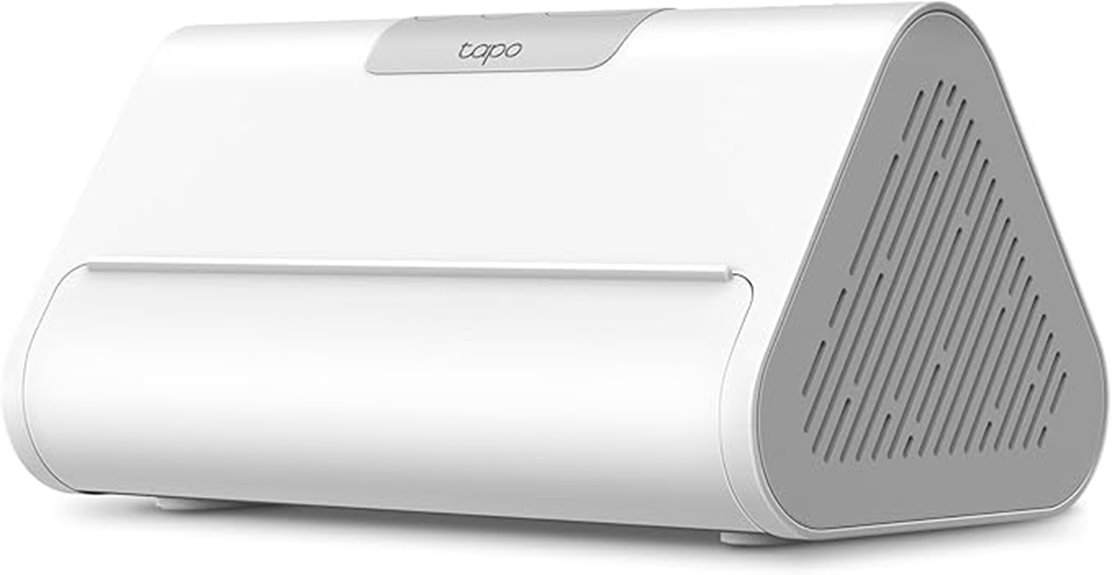
For those seeking a versatile smart home hub with expandable storage, the Tapo H500 stands out as an excellent choice. It controls up to 16 Tapo cameras, video doorbells, and 64 sensors, supporting integration with Google Assistant, Alexa, and Matter devices. The hub offers reliable Wi-Fi and Ethernet connectivity and meets strict security standards. With 16GB of built-in storage, expandable via a 2.5-inch SATA drive, it lets you review footage without subscriptions. Its AI features, including facial recognition, improve security alerts. Compact and easy to install, the Tapo H500 provides seamless local control, though storage options and third-party camera compatibility are somewhat limited.
Best For: smart home users seeking a reliable, centralized hub with expandable local storage and seamless integration with Tapo devices and major voice assistants.
Pros:
- Supports controlling up to 16 cameras, video doorbells, and 64 sensors for comprehensive home security.
- Expandable storage via 2.5-inch SATA HDD/SSD, allowing for large, subscription-free video archives.
- Easy setup with a compact design and compatibility with Google Assistant, Alexa, and Matter devices.
Cons:
- Limited to 2.5-inch drives; no support for external USB drives or larger HDDs.
- Lacks ONVIF/RTSP support, restricting compatibility with third-party cameras.
- USB 2.0 data transfer speed may hinder handling large video files efficiently.
Homey Bridge Smart Home Hub for Automation
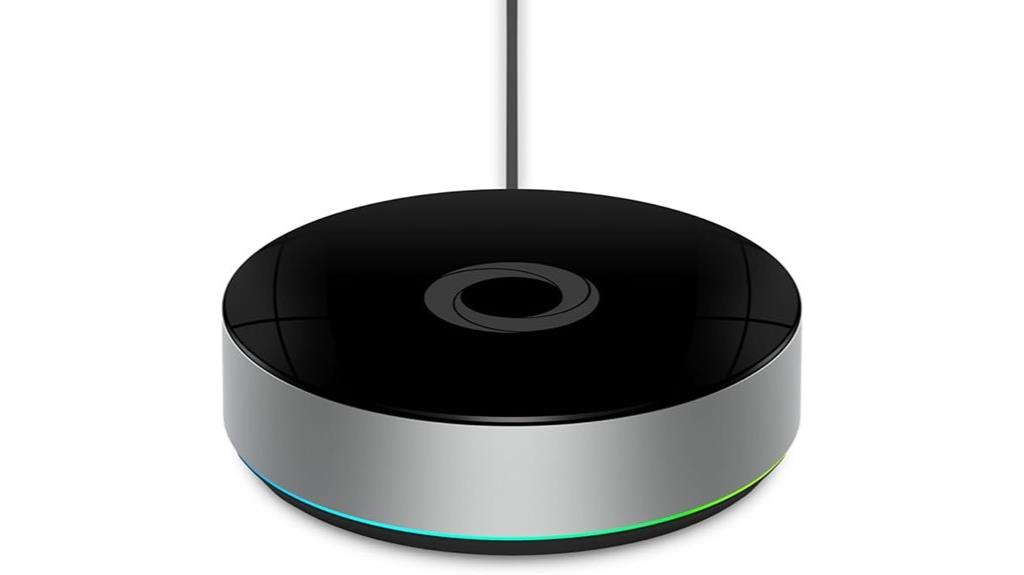
If you’re looking for a smart home hub that offers extensive connectivity options, the Homey Bridge stands out as a solid choice, especially if you value compatibility with a wide range of devices. It supports Z-Wave Plus, Zigbee, Wi-Fi, BLE, and Infrared, allowing voice control with Alexa, Google, and Siri Shortcuts (sold separately). You can connect devices from brands like Philips Hue, Sonos, Nest, and more. Setup is quick, but some users face connection issues, range limitations, and difficulty pairing certain devices like smart locks or thermostats. Despite automation capabilities, many find the app clunky and support slow, which affects overall user experience.
Best For: those seeking a versatile and compatible smart home hub with support for multiple connectivity protocols and device brands, willing to tolerate potential setup and connectivity challenges.
Pros:
- Supports a wide range of connectivity options including Z-Wave Plus, Zigbee, Wi-Fi, BLE, and Infrared
- Compatible with popular voice assistants like Alexa, Google Home, and Siri Shortcuts (devices sold separately)
- Allows extensive automation and device integration from various brands such as Philips Hue, Sonos, Nest, and more
Cons:
- Users often experience connection issues and limited device support, especially with smart locks and thermostats
- Setup can be complicated, with some needing multiple attempts and facing app usability problems
- Customer support is slow, and additional subscription costs are required for connecting more than five devices and accessing insights
Lutron Caseta Smart Lighting Hub for Light Bulbs and Fans
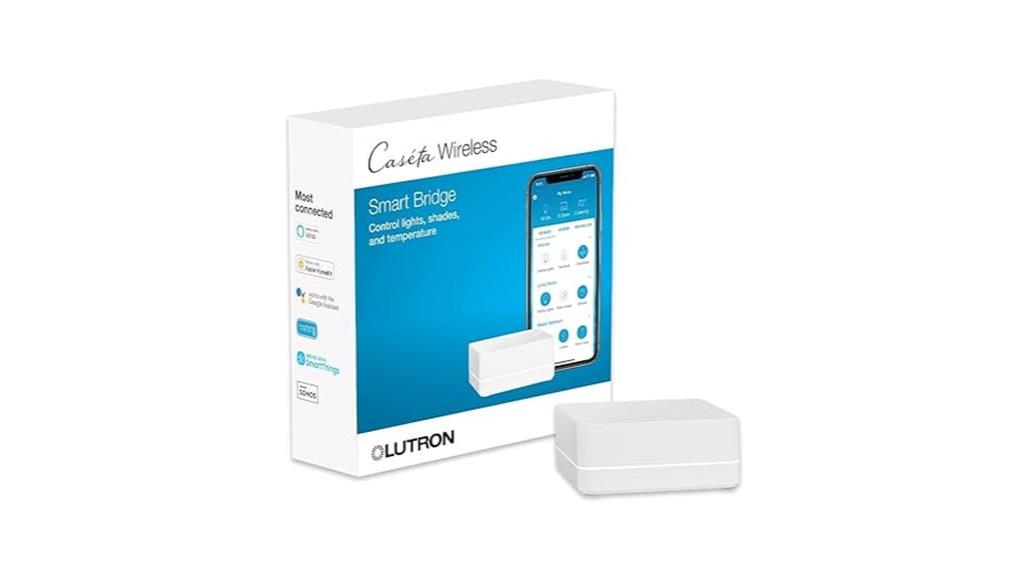
The Lutron Caseta Smart Lighting Hub stands out as an excellent choice for homeowners seeking reliable, seamless control over multiple smart lights, shades, and fans. It supports up to 75 devices, allowing remote management via smartphone, tablet, or Apple Watch. Compatible with Alexa, Apple HomeKit, Google Assistant, and more, it offers fast, dependable voice commands and app controls. Setup is straightforward—plug it in, connect to Wi-Fi, and pair your devices. The system excels in automation, scheduling, and scene creation, making your home smarter and more convenient. Users praise its stability, range, and responsiveness, making it a top pick for reliable smart lighting control.
Best For: homeowners seeking a reliable, easy-to-use smart lighting system that integrates with multiple voice assistants and supports extensive device control.
Pros:
- Supports up to 75 devices, making it suitable for comprehensive smart home setups
- Compatible with major platforms like Alexa, Apple HomeKit, and Google Assistant for seamless voice control
- Easy installation and setup with reliable, fast response times and stable performance
Cons:
- Basic app interface may lack advanced customization options some users desire
- Some users have reported receiving pre-owned hubs advertised as new, affecting trust
- No built-in Wi-Fi connectivity for the hub, requiring wired setup or reliance on Wi-Fi extender
Aqara Smart Hub M2 for Home Automation

The Aqara Smart Hub M2 stands out as an excellent choice for homeowners seeking reliable, all-encompassing home automation. It requires a 2.4 GHz Wi-Fi connection and supports up to 128 Zigbee devices, including repeaters like LED strips, smart plugs, and wall switches. The hub features an Ethernet port for wired stability and USB power for flexible placement. It integrates seamlessly with Apple HomeKit, Google Assistant, Amazon Alexa, and IFTTT, enabling voice control and automation routines. Its built-in speaker handles security alerts, alarms, and doorbell functions. While it doesn’t support Thread or third-party Zigbee devices, it offers a simple, effective solution for all-inclusive smart home management.
Best For: homeowners seeking a reliable, all-in-one smart home hub that integrates with major voice assistants and supports extensive Zigbee device networks.
Pros:
- Supports up to 128 Zigbee devices, including repeaters, for comprehensive home automation.
- Seamless integration with Apple HomeKit, Google Assistant, Amazon Alexa, and IFTTT for versatile control options.
- Includes built-in speaker for security alerts, doorbell functions, and alarms, enhancing home security.
Cons:
- Does not support Aqara Thread or third-party Zigbee devices, limiting compatibility.
- Requires a 2.4 GHz Wi-Fi connection, which may not be ideal in all network setups.
- Indoor use only, with IR remote control limited to controlling existing IR appliances.
Hubitat Elevation Home Automation Hub (Model C-8)
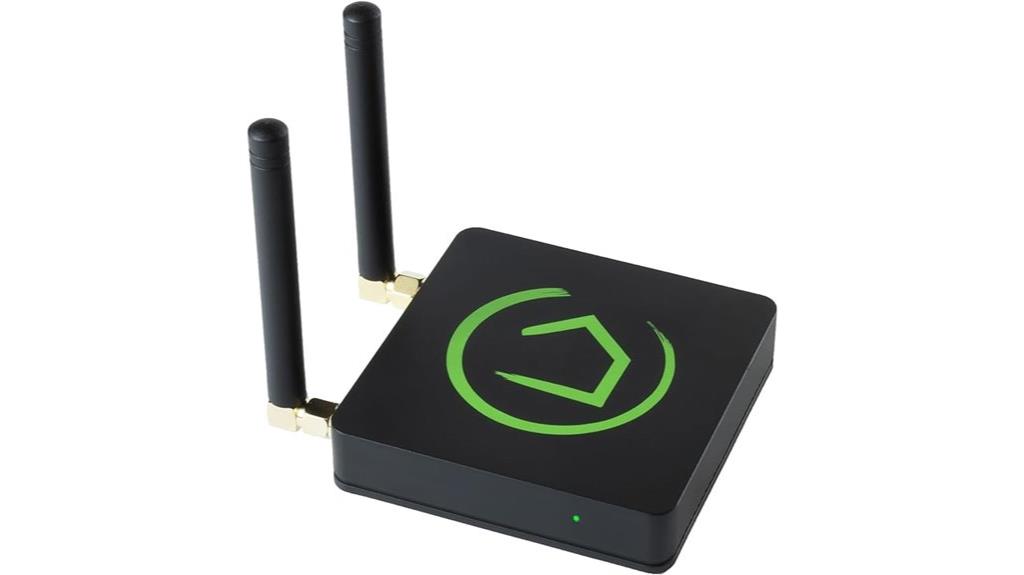
For tech-savvy homeowners seeking a highly customizable and private smart home hub, the Hubitat Elevation Home Automation Hub (Model C-8) stands out as an excellent choice. It offers local processing for fast, reliable, and private automation. Supporting Zigbee, Z-Wave, Matter, Wi-Fi, and Ethernet, it’s compatible with over 1,000 devices from 100+ brands, including Apple HomeKit and Alexa. The hub enables complex automations with its Rule Machine and automation apps, all processed locally. While the interface can be less intuitive, active community support and continuous updates improve usability. Overall, it provides a flexible, internet-independent solution for those comfortable with scripting and troubleshooting.
Best For: Tech-savvy homeowners seeking a highly customizable, private, and internet-independent smart home hub with extensive device support and advanced automation capabilities.
Pros:
- Supports local processing for fast, reliable, and privacy-focused automation
- Compatible with Zigbee, Z-Wave, Matter, Wi-Fi, and Ethernet, over 1,000 devices from 100+ brands
- Enables complex automations and integrations with voice assistants like Apple HomeKit, Alexa, and Google
Cons:
- Interface can be less intuitive and has a steep learning curve for beginners
- Occasional stability issues, especially with Z-Wave device connections and network stability
- Requires troubleshooting and scripting knowledge for advanced customization and troubleshooting
Smart Hub Gateway: Wi-Fi, Zigbee & Bluetooth Mesh Communication Bridge
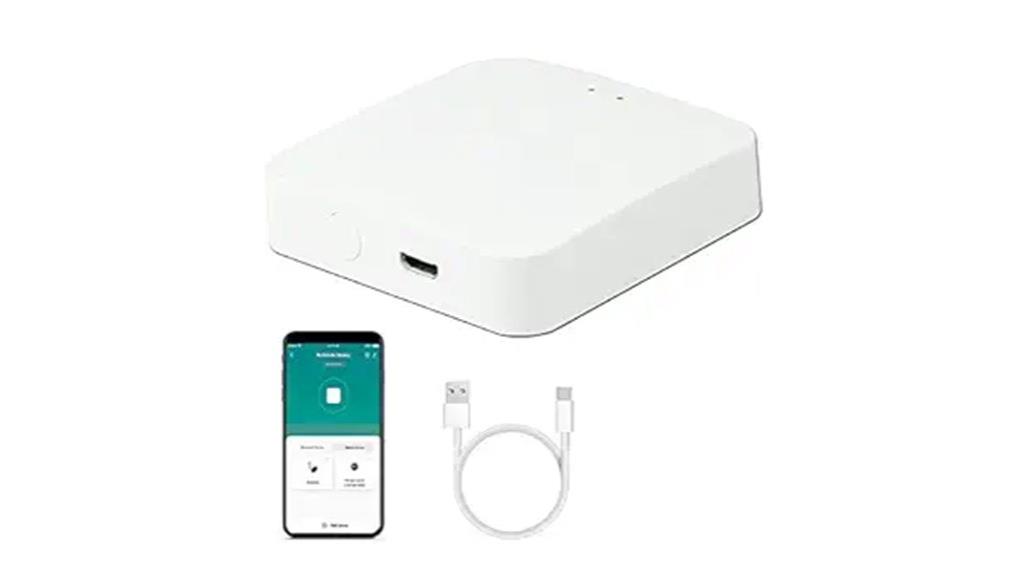
If you’re looking to streamline your smart home setup, a smart hub gateway that supports Wi-Fi, Zigbee, and Bluetooth Mesh communication offers unmatched versatility. I’ve found that these gateways can control up to 128 devices from a single platform, simplifying management. They work with apps like Smart Life or Tuya for easy setup and remote control. Plus, they’re compatible with Alexa, Google Assistant, and Siri for voice commands. The compact design makes installation quick, often in under five minutes. While some users experience disconnection issues or limited device compatibility, the overall value, ease of use, and seamless integration make these gateways a practical choice for a connected home.
Best For: homeowners seeking a versatile, easy-to-set-up smart hub that integrates multiple protocols and controls a large number of devices remotely and via voice commands.
Pros:
- Supports Wi-Fi, Zigbee, and Bluetooth Mesh simultaneously for broad device compatibility
- Easy installation typically completed in under five minutes with app control for remote management
- Compatible with major voice assistants like Alexa, Google Assistant, and Siri for hands-free operation
Cons:
- Occasional disconnection issues and limited Zigbee device compatibility can affect reliability
- Slow response times and limited reception distance may hinder performance in larger homes
- Some units may experience failure after about 45 days, impacting long-term use
Hubitat Elevation Home Automation Hub (Model C-8 Pro)
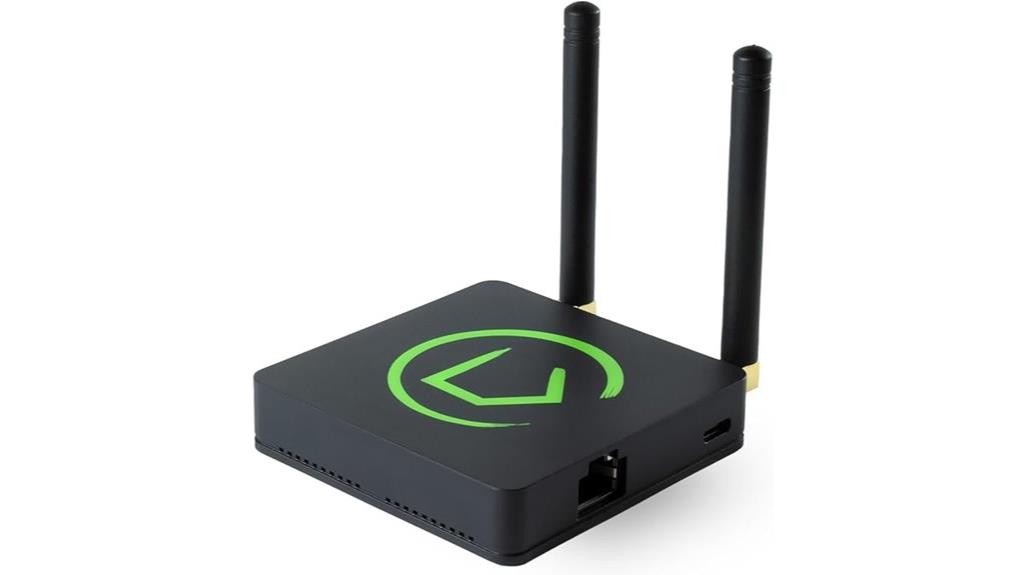
Home automation enthusiasts who prioritize privacy, reliability, and complex customization will find the Hubitat Elevation C-8 Pro an ideal choice. It supports over 1000 devices from more than 100 brands, including Zigbee, Z-Wave, Wi-Fi, IR, and Matter, ensuring broad compatibility. All processing happens locally, which boosts speed, security, and independence from cloud services. You can create detailed automations, scenes, and dashboards tailored to your needs. While setup can be intricate, the active community and guides help. Its robust performance and local control make it perfect for advanced users who value privacy and reliable, complex automation without relying on the internet.
Best For: tech-savvy home automation enthusiasts who prioritize privacy, reliability, and complex customization in their smart home setups.
Pros:
- Supports over 1000 devices from more than 100 brands, including Zigbee, Z-Wave, Wi-Fi, IR, and Matter.
- Processes all data locally, ensuring fast response times and enhanced security.
- Highly customizable with advanced automation rules, scenes, and dashboards suitable for complex setups.
Cons:
- Setup can be complex and may be overwhelming for beginners or non-technical users.
- User interface and configuration process may require a learning curve.
- Remote management features may involve additional costs and are less straightforward for casual users.
SwitchBot Hub 3 (3rd Gen) Smart Home Hub
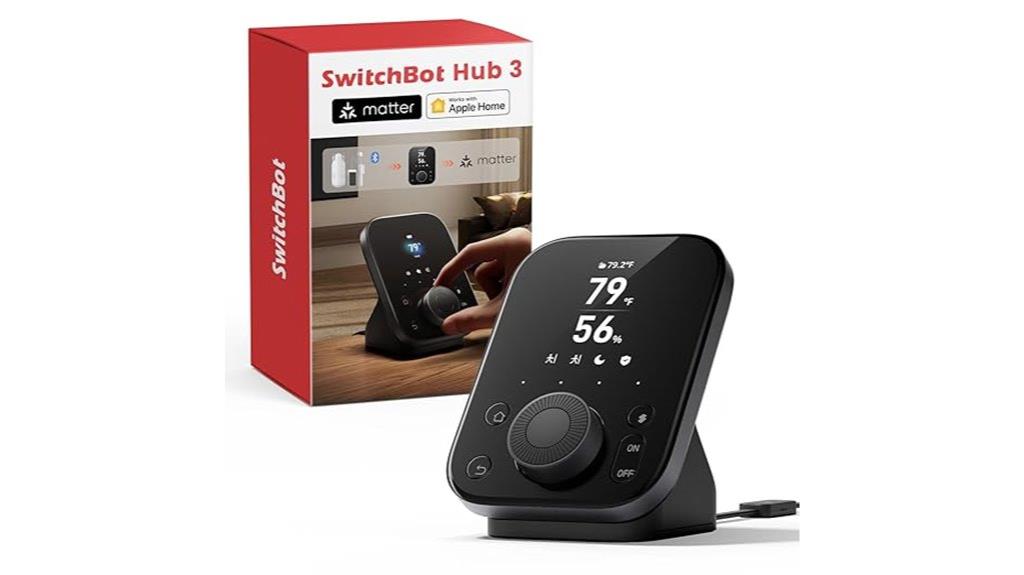
The SwitchBot Hub 3 (3rd Gen) stands out as an all-in-one smart home controller designed for those who want to simplify their ecosystem. It manages over 100,000 infrared appliances, SwitchBot devices, and third-party Matter-compatible gadgets, acting as a universal remote with enhanced IR capabilities. Its vivid IPS screen displays real-time data like temperature, humidity, and weather, while the rotary dial and soft keys make scene control effortless. Compact and modern, it integrates seamlessly via WiFi and supports voice assistants like Alexa, Google, and Apple Home. Overall, it consolidates multiple functions into one device, reducing clutter and streamlining smart home management.
Best For: smart home enthusiasts seeking a versatile, all-in-one hub to control infrared devices, third-party Matter gadgets, and integrate seamlessly with voice assistants and ecosystems like Apple HomeKit.
Pros:
- Consolidates multiple smart home functions into a single, compact device, reducing clutter.
- Supports over 100,000 infrared appliances and third-party Matter-compatible devices for broad compatibility.
- Equipped with a vivid IPS screen, environmental sensors, and customizable controls for intuitive management.
Cons:
- Some users report issues with auto-brightness and initial setup difficulties.
- Limited display size may reduce ease of viewing detailed information at a glance.
- Remote buttons sometimes require reprogramming, and less integrated for users not using the SwitchBot ecosystem.
Factors to Consider When Choosing Smart Home Hubs
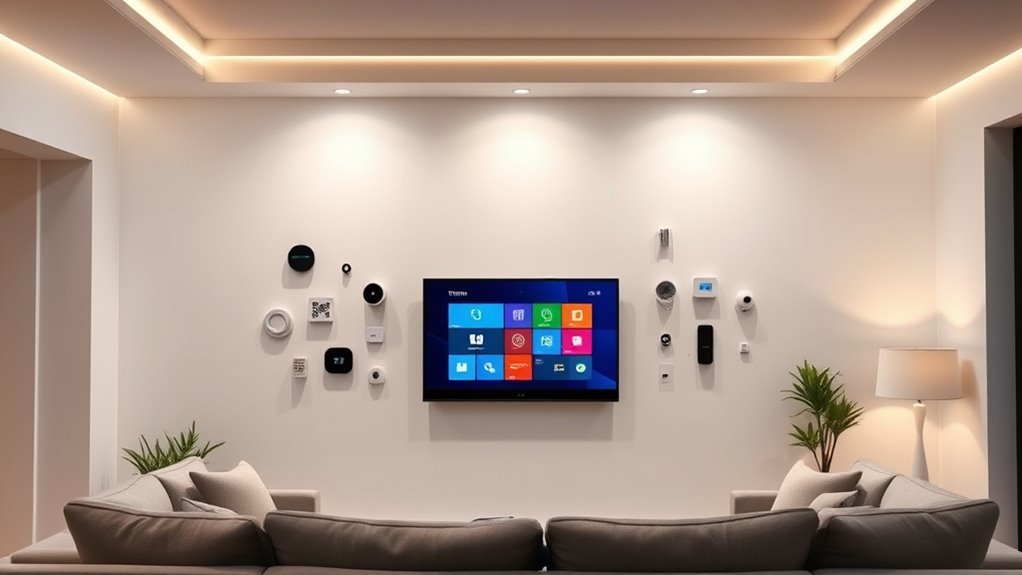
When choosing a smart home hub, I consider several key factors to make certain it fits my needs. Compatibility with different protocols, ease of setup, and support for my device ecosystem are top priorities. I also look at privacy, security, and how flexible the automation options are to create a seamless and safe smart home experience.
Protocol Compatibility
Choosing a smart home hub that supports the communication protocols used by your devices is essential for seamless integration and reliable operation. I recommend verifying that the hub supports key protocols like Zigbee, Z-Wave, Wi-Fi, Bluetooth, Thread, or Matter, ensuring compatibility with your existing devices. It’s also wise to check if the hub can handle multiple protocols simultaneously, so you don’t need extra bridges or hubs. Compatibility with third-party protocols and devices is vital, especially if your smart ecosystem includes products from various manufacturers. Keep an eye on emerging standards like Matter, which aim to unify device communication across ecosystems for better interoperability. Be aware of any protocol restrictions, such as hubs limited to specific brands or lacking support for newer standards, as they could limit future device choices.
Ease of Setup
A smooth setup process is essential because it determines how quickly and easily you can start enjoying your smart home system. I look for hubs with straightforward setup procedures, often involving app-based pairing or simple physical connections like Ethernet or USB. Clear instructions or guided setup wizards boost confidence and reduce errors, making installation manageable even for beginners. Compatibility with your existing devices and ecosystems can speed things up by simplifying discovery and pairing. Features like automatic device detection, QR code scanning, or “Magic Pair” technology are game-changers, substantially cutting down setup time. A user-friendly interface and minimal technical knowledge requirements are also key, ensuring that anyone can configure the hub without frustration or extensive technical know-how.
Device Ecosystem Support
Support for various device ecosystems is a major consideration because it determines how seamlessly your existing smart devices will integrate with your hub. I look for hubs that support protocols like Zigbee, Z-Wave, Thread, or Matter, ensuring compatibility with my current devices. Compatibility with popular voice assistants such as Alexa, Google Assistant, and Apple HomeKit also matters, as it expands control options. I prefer hubs that support multiple ecosystems simultaneously, offering flexibility and room to grow. It’s essential that the hub regularly updates its ecosystem support to stay compatible with new devices and standards. Some hubs are limited to their native brand or protocol, which can restrict versatility. Choosing a hub with broad and ongoing ecosystem support makes managing and expanding my smart home much easier.
Privacy and Security
When selecting a smart home hub, prioritizing privacy and security is essential to protect your personal data and maintain control over your devices. Look for hubs that support strong encryption protocols like WPA3, ensuring data transmitted over Wi-Fi stays secure. Hardware privacy controls, such as microphone mute buttons and camera shutters, add an extra layer of protection against unauthorized access. Regular security updates for firmware and software are vital to patch vulnerabilities over time. Opt for hubs that emphasize local control and automation, reducing reliance on cloud services and lowering hacking risks. Finally, review the manufacturer’s privacy policies carefully to understand how your data is collected, stored, and shared, making sure they align with your security expectations and comfort level.
Automation Flexibility
Choosing a smart home hub with strong automation flexibility means ensuring it can handle a variety of protocols like Z-Wave, Zigbee, Thread, and Wi-Fi, so your devices can work together seamlessly. This broad compatibility allows you to integrate a diverse range of devices without compatibility issues. Additionally, supporting local processing of routines means automations run faster and don’t rely solely on cloud services, reducing delays. The ability to create complex scenes and conditional automations, like triggering multiple devices based on sensor data or specific times, adds a new level of customization. Support for third-party integrations and open platforms lets you expand your system over time. Features like geofencing and scheduled routines boost automation versatility, making your smart home more responsive and user-friendly.
Power and Connectivity Options
Selecting a smart home hub involves more than just compatibility with your devices; you also need to contemplate how it powers and connects to your network. Make sure the hub supports the right power options, like USB-C, PoE, or AC adapters, to suit your installation environment. Connectivity options are equally important—look for dual- or tri-band Wi-Fi, Ethernet, and Bluetooth to ensure versatile device integration. Check if it supports protocols like Zigbee, Z-Wave, Thread, or Matter, depending on your device ecosystem. Decide whether wired options such as Ethernet or USB fit better than wireless connections like Wi-Fi or Bluetooth, based on your home’s network setup. Finally, verify the hub’s maximum device capacity and future expansion potential to keep your smart home scalable.
Frequently Asked Questions
Can Smart Hubs Integrate With All Existing Smart Home Devices?
Yes, most smart hubs can integrate with a wide range of existing smart home devices, but compatibility varies. I recommend checking each hub’s supported protocols and device lists before purchasing. I’ve found that hubs supporting popular standards like Zigbee, Z-Wave, and Wi-Fi tend to work with more gadgets. This way, you guarantee seamless control of your smart devices, making your connected home truly smarter and more convenient.
What Security Features Do These Smart Hubs Offer?
Smart hubs prioritize security by offering encryption for data transmission, ensuring your devices stay protected from hackers. Many include multi-factor authentication, secure access controls, and regular firmware updates to patch vulnerabilities. Some even feature built-in firewalls and device monitoring tools. I always look for hubs with robust security features because they help keep my connected home safe and give me peace of mind knowing my personal information is secure.
How Easy Is It to Set up and Configure These Hubs?
Setting up these smart hubs is surprisingly straightforward. I found that most come with detailed instructions and user-friendly apps that guide you step-by-step. I just plugged in the hub, connected it to my Wi-Fi, and followed the prompts on the app. Within minutes, I was able to customize my settings and add devices. Overall, I’d say they’re designed for ease, even if you’re not tech-savvy.
Do Smart Hubs Support Voice Control in Multiple Languages?
Yes, many smart hubs support voice control in multiple languages. I’ve found that popular brands like Amazon Alexa and Google Assistant offer this feature, allowing me to switch languages easily. This makes it convenient for multilingual households or those learning a new language. Just a quick setup in the app, and I can use voice commands in different languages, making my connected home more accessible and user-friendly.
Are These Hubs Compatible With Future Smart Home Technology Updates?
Think of these hubs as the wise sages of your smart home, ready for whatever the future holds. They’re designed with updates in mind, ensuring compatibility with upcoming tech innovations. I’ve found that most top hubs support firmware upgrades and software updates, so your investment stays current. So, yes—they’re built for tomorrow, helping you stay connected and adaptable as your smart home evolves.
Conclusion
Choosing the right smart home hub can truly transform your connected living experience. With so many options, it’s about finding the one that fits your lifestyle and tech needs. Do you want seamless control at your fingertips or a hub that integrates all your devices effortlessly? Think about your daily routines and imagine how a smart hub could make them smoother. After all, isn’t making life easier what smart living is all about?
